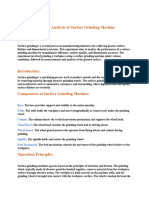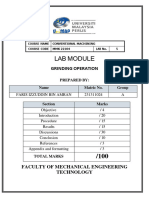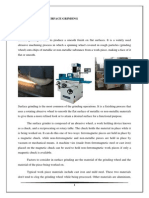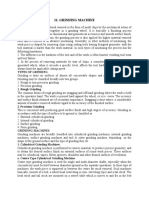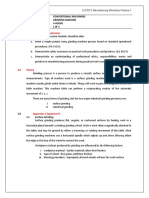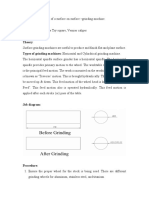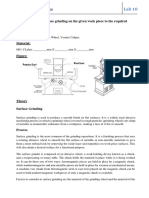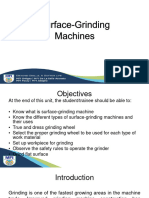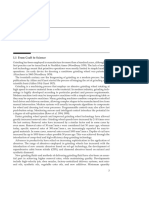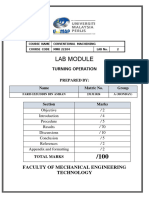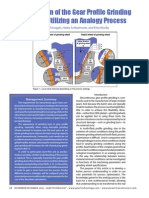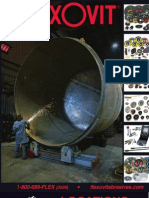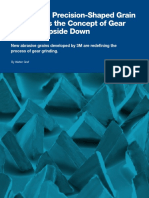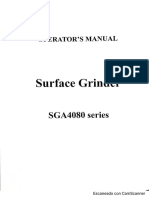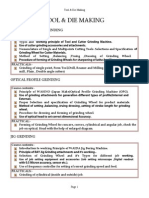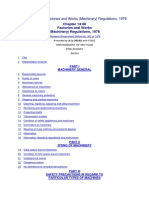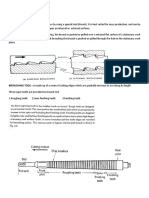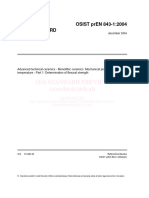Introduction:
Surface grinding is a precision machining process that uses a rotating abrasive
wheel to remove material from the surface of a workpiece. This technique is
widely used in various industries to achieve precise dimensional tolerances and
high-quality surface finishes. The surface grinding machine is a multipurpose
instrument that can be employed for internal, cylindrical, and flat grinding, among
other tasks.
Objective:
To know about different operations of surface grinding machines.
Theory:
Surface grinding is an abrasive machining technique. The fundamental process of
abrasive machining involves the formation of chips from tiny cutting edges that are
an essential component of the abrasive particles. Like grinding, abrasive machining
can generate a variety of surfaces, from the smoothest and finest surfaces possible
with minimal material removal to rough, coarse surfaces with a high material
removal rate (MRR). The abrasives are bound together by a bonding substance
known as bonded product, and they might be free, mounted in resin on a belt, or
tightly packed into wheels or stones. Though there are some significant variations
because of the active grain spacing and degree of grain attachment, the metal
removal procedure is essentially the same in all three situations.
Apparatus Required:
Surface Grinding Machine, Grinding wheel and workpiece.
Page 1 of 4
� Fig-1: Surface Grinding Machine
Procedure:
We received a workpiece that was corroded, dusty, and dimensionally inaccurate.
The initial width measurements of the workpiece were 7 mm, 7.2 mm, 7.5 mm, and
7 mm.
To achieve accurate dimensions, the following procedure was followed:
1.Setup: The workpiece was secured to the magnetic chuck of the surface grinding
machine. The abrasive wheel was installed and balanced.
2. Safety Check: Protective equipment, including safety goggles and gloves, was
worn. All guards were ensured to be in place, and the coolant system was verified
to be functioning.
3. Machine Calibration: Machine settings, such as table speed, depth of cut, and
spindle speed, were adjusted based on the material and desired finish.
Page 2 of 4
�4. Initial Grinding: A rough grinding pass was performed to remove the majority
of the material.
5. Finishing: Successive passes with reduced depth of cut were performed to
achieve a smoother finish.
6. Evaluation: The workpiece was inspected for desired surface quality and
dimensional accuracy. Surface finish measurements were taken at four corners
using slide calipers.
7. Cleanup: The machine was turned off, and the work area was cleaned.
Result:
After finishing the surface grinding process (fig-3) , we found a workpiece that is
dimensionally accurate, non corroded ,smooth and clean surface. After the surface
grinding process, the width of the workpiece is 6.9 mm from every corner.
Fig-2: Before surface grinding. Fig-3: After surface grinding.
Page 3 of 4
�Conclusion:
This experiment provided valuable hands-on experience with a surface grinding
machine. By understanding the various components, settings, and operations
involved in surface grinding. We were able to successfully perform surface
grinding operation. This knowledge will be beneficial in future machining
applications and will help us to produce high-quality parts with precise dimensions
and surface finishes.
Page 4 of 4

